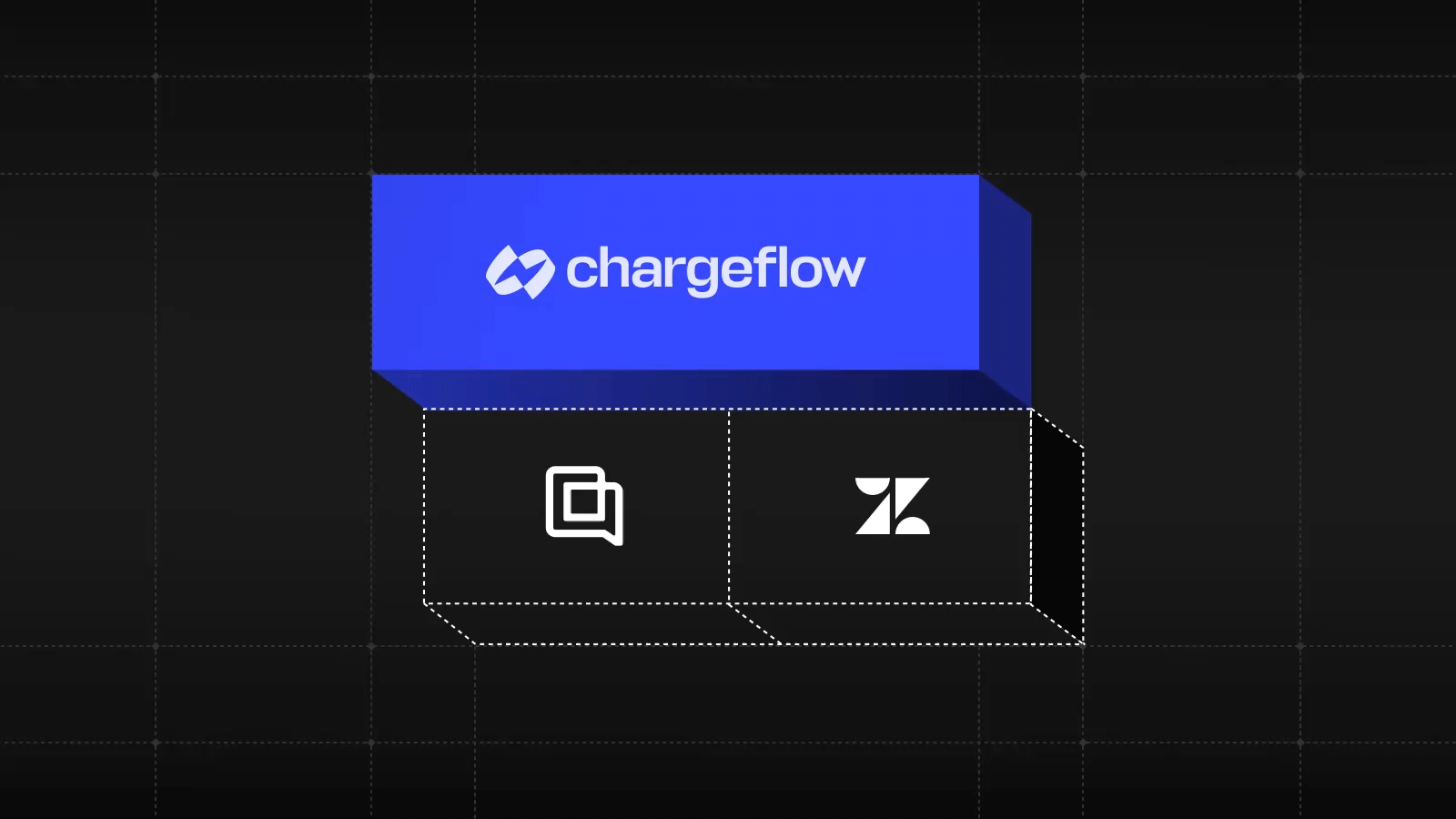Navigating Chargeback Challenges in Apparel Retail

Chargebacks?
No longer your problem.
Recover 4x more chargebacks and prevent up to 90% of incoming ones, powered by AI and a global network of 15,000 merchants.
Explore effective strategies to navigate and resolve chargeback challenges in the apparel retail industry with Chargeflow.
For fashion retailers, chargebacks are nothing new. Customer disputes have been part of the business landscape for years. Most apparel merchants understand that chargebacks are a necessary and healthy consumer protection.
But what has changed is the scope and volume of chargebacks. Global chargeback volume is projected to reach 337 million transactions in 2026. That's a 42% increase from 2023 levels. Chargebacks are no longer a small problem you hope to avoid here or there—they now represent a serious revenue loss.
What drove this change? There are several possible factors. The growth of eCommerce is a well-known driver of change. So are shifting consumer expectations as we all adapt to a digital world. The increase in fraud plays a part. And let's not forget how convenient it is now to file a dispute (with a simple push of a button).
Unfortunately, these factors will likely grow in potency. The popularity and prevalence of digital markets continue to expand. Which means so will chargebacks. Chargebacks are not some trivial business expense anymore.
So what can the fashion retailers do? Let’s explore the problem of apparel chargeback and offer some data-backed solutions.
Strategies for Improving Chargeback Outcomes in Apparel
To start, there are several conventional strategies commonly known to help improve chargeback outcomes:
- The use of good customer service: Service reps can resolve a multitude of issues before they become disputes. A happy customer whose problems and issues are attended to has less reason to turn to a chargeback.
- High-quality evidence: In cases of friendly fraud and false claims, good evidence wins back revenue. The more compelling the evidence, the greater the win rate.
- Robust fraud detection: The chargeback process protects consumers from errors and fraud. So the more you stop instances of fraud, the fewer overall chargebacks.
- Customer communication: The more touch points throughout the buyer’s journey, the easier it is to deflect possible disputes. A well-informed customer supported by sales reps is less likely to file a chargeback.
Learning From Successful Apparel Merchants
These conventional strategies are well-known and function across almost every industry. But interestingly, the Chargeflow 2024 State of the Chargebacks report found that Apparel retailers had the fourth-highest win rate, winning 35.81% of cases. That's just a few points shy of the winningest industry, Beauty and Fitness, which won 40.9%. And apparel merchants drastically out-worked low performers like the Games & Leisure industry, which won just 15.2% of cases.
This begs the question, what exactly are fashion retailers doing right?
Reason Code Analysis
Reason code analysis offers some insights. From our data, it appears that successful apparel merchants focus on one key element: the physical item.
Since apparel always involves the sale of tangible goods, chargebacks occur for specific reasons related to the issue of handling physical items. For example, fashion retailers often deal with sizing problems. That is a unique problem specific to clothing (especially clothing bought online). Or compare delivery issues between digital products and physical items—shipping large goods is a much greater challenge. These unique issues result in more apparel-specific disputes.
Reason code data suggests the same. For example, duplicate charges (a merchant or system error) accounted for just 1.36% of apparel chargebacks. Recurring billing issues earned but a 3% share. Both chargeback reasons are virtually non-existent for fashion retailers.
On the other hand, “Product Not Received” accounted for a whopping 37.01% of industry chargebacks. Clearly, delivering physical items is a great challenge (and shows the disastrous impact of shipping problems).
Similarly, “Product Not Described” accounted for 21.82%. These chargebacks are due to problems with the item or purchase itself. Think of a customer who receives the wrong item, a damaged garment, or an item made of materials not listed in the product description. There is a difference between the digitally advertised product and the physical item they received. Such a discrepancy (and dissatisfaction) leads to a lot of disputes.
And lastly, fraud accounted for 23.79% of apparel chargebacks. Of course, true fraud affects all merchants, regardless of the industry. However, fashion retailers deal with specific kinds of apparel fraud.
For example, fast fashion items result in high transaction volumes that make it harder to track suspicious activity between all the noise. Or think of fake gift card scams and how they lead to cyber shoplifting. Some criminals swap shipping labels and take advantage of lax return policies. Or consider wardrobing, where customers wear an item once for special outings before returning it or filing a dispute. These are industry-specific forms of fraud related to stealing physical clothing—and they lead to more chargebacks.
Strategies of Successful Apparel Merchants
In summary, as a fashion retailer, you gain better chargeback outcomes when you resolve the unique issues related to tangible apparel products.
But what apparel-specific strategies help achieve those improved outcomes? Here are several best practices specific to fashion retailers:
- Write detailed product descriptions: The more info you provide, the better. Not only is it a good form of communication, but it helps set customer expectations. Note specs such as size, material, color, where it is made, style, type, finish, unique features, etc.
- Accurately match digital items to their physical counterpart: Of course, don't exaggerate. It is easy to add "marketing language" to help sell a garment. And sometimes items in the same collection are lumped together, even if they might have different features (e.g. stripes or rips). Correct these subtle differences so that all descriptions match the exact item being shipped out.
- Use high-quality photos: Good photos help display the product. Use the correct perspective. And if you use a model, display the garment with the body type the garment is designed for. If possible, include technical zoom functions.
- Market with user-generated content: Let potential consumers access user-generated content. Photos, videos, and blogs from other buyers offer real-world examples of how the garment fits and looks.
- Include user reviews: In the same vein, connect user reviews to the product pages. Testimonials provide great social proof and help set customer expectations.
- Try virtual fitting rooms and augmented reality tours: Novel technology can help you better address customer dissatisfaction. The ability to "try on" a clothing item digitally supports consumer confidence.
- Invest in good inventory management and shipping: Hire trusted suppliers. Top-notch order fulfillment fixes delivery issues that normally would result in a chargeback.
- Earn delivery confirmation and signatures: Ask for the customer's delivery confirmation. A signature proving the user received their item can be a crucial bit of evidence that wins cases related to shipping disputes.
- Offer in-store credit: Most scammers are in search of cash. By holding a strong in-store credit policy on returns, you can limit refund abuse.
- Integrate apparel-specific fraud defenses: Add preventative solutions that help protect accounts, verify users, track activity, and monitor for scams.
The Importance of Win Rate Optimization in Apparel
The strategies listed are specific to apparel retailers. But note how many of those best practices are preventative. What about those false claims that you can't deflect? How do you win cases that require representment? Apparel merchants also need post-sale chargeback defenses.
Post-sale defenses focus on winning back revenues. Just as consumers have the right to dispute errors, so do you. And consumers make mistakes, forget charges, or engage in mistaken friendly fraud. For fashion retailers with tight margins, winning cases offers several key benefits:
- Cost reduction: Winning a case avoids several fees related to chargebacks.
- Protecting profit margins: Winning a case earns back deserved sales funds.
- Safeguarding cash flow: Winning a case causes far less chaos for accounting than chargeback fund reversals.
- Preserving your business reputation: Winning cases maintains a low dispute rate, an important fact favored by issuers, payment processors, and honest consumers.
- Avoiding card issuer penalties: Avoid restrictions by keeping a low chargeback ratio.
Leveraging Chargeflow for Chargeback Management in Apparel
For good post-sale chargeback defenses, chargeback management tools are an ideal solution. That's exactly how Chargeflow's solutions can be specifically utilized by apparel merchants to navigate chargeback disputes.
For example, our tools make it easy to compile compelling evidence. We collect all data points, like sales receipts, tracking numbers, customer communication, and IP timestamps. Such a wealth of proof helps you win cases.
Or consider how we help craft rebuttal letters. We all pull and match incoming disputes (based on machine learning) to effective response templates. Out fraud and evidence strength analysis give you a screening score, helping you decide if a dispute is worth fighting. And all documents and data are delivered on time and before deadlines.
Best of all, these processes are automated. They are not time-consuming or labor-intensive tasks. That helps you win cases efficiently, without wasting more resources fighting a dispute than you would win back. Our chargeback management tools offer a rapid return on investment for apparel merchants who want to achieve better chargeback outcomes.
Conclusion
While a 40% win rate for chargeback disputes in the apparel industry is commendable, especially compared to other sectors, the loss of 60% of cases still significantly impacts revenue. This high rate of lost disputes points to the need for a deeper understanding and a more strategic approach. Chargebacks, particularly those resulting from friendly fraud, should not be normalized as a routine cost of doing business.
Chargeflow's 2024 State of Chargebacks report is a vital resource in the fight against chargebacks, including those caused by friendly fraud. By providing detailed insights into industry trends and effective strategies, the report empowers retailers to develop targeted defenses. These insights help not only in mitigating general chargebacks but are especially useful in identifying and combating instances of friendly fraud, thereby enhancing profitability and ensuring customer satisfaction.
For an in-depth understanding of the current chargeback challenges and to discover tailored strategies for your business, read our full chargeback report.

Chargebacks?
No longer your problem.
Recover 4x more chargebacks and prevent up to 90% of incoming ones, powered by AI and a global network of 15,000 merchants.






























.png)








